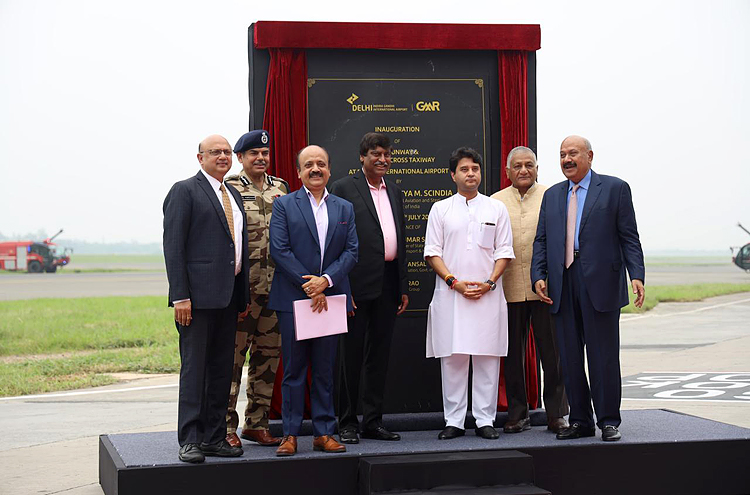INDIAN ARMED FORCES CHIEFS ON
OUR RELENTLESS AND FOCUSED PUBLISHING EFFORTS

SP Guide Publications puts forth a well compiled articulation of issues, pursuits and accomplishments of the Indian Army, over the years

I am confident that SP Guide Publications would continue to inform, inspire and influence.

My compliments to SP Guide Publications for informative and credible reportage on contemporary aerospace issues over the past six decades.
Jyotiraditya M. Scindia inaugurates 4th Runway and elevated Taxiway at Delhi Airport
- IGI Airport becomes the first airport in the country to have four runways and an elevated taxiway
- Total paved length of the runway is 4.4 km, and its width is 45m
- Runway can handle wide-body aircraft including A-380&B-777
- The Dual-way elevated taxiway connects the Northern & Southern airfields
- The Taxiway will help reduce taxi distance for aircraft by 7 km and annual CO2 emissions by 55,000 tonnes


Jyotiraditya M. Scindia, Union Minister for Civil Aviation and Steel inaugurated a new runway and a dual-way elevated taxiway at New Delhi International Airport today. With this, the IGI Airport, New Delhi has become the first airport in the country to have four runways and becomes the first airport in the country to have an elevated taxiway. During the event, General (Dr.) Vijay Kumar Singh (Retd.) Union Minister of State for Civil Aviation, and Road Transport and Highways, Sanjeev Kumar, Chairman, Airport Authority of India, G. M. Rao, Group Chairman, GMR were also present.
Eastern Cross Taxiway (ECT) will help in enhancing the passenger experience by reducing time spent on the tarmac by flyers after landings and before take-offs. Furthermore, four runway operations and the ECT will significantly increase capacity at IGIA – making it capable of handling 1700+ movements.

Speaking on the occasion, Jyotiraditya M. Scindia said “Under the leadership of Prime Minister Narendra Modi, the Civil Aviation sector is not only contributing to the transportation sector but also becoming a key enabler in the rise of the economic power of India. Today is a landmark day for Indian civil aviation, both on infrastructure side and services side. The Eastern Cross Taxiway is the first of its kind in India. Also, this elevated Eastern Cross Taxiway (ECT) will see a reduction of almost 55 thousand tons of CO2 Emission on annual basis. Also, this ECT, along with the fourth runway and the new integrated Terminal 1, will make Delhi Airport future-ready and fulfil the dream of creating a major International Hub. Capacity along with Technological intervention will further enhance the passenger experience. The northern part of the airfield and the southern part of the airfield will be conveniently connected by this. It means an 8 to 9 minute reduction in taxi time. This runway makes Delhi Airport, the only airport in the country to have 4 runways. This runway along with the terminal expansion will add to creating capacity to serve more than 109 million people throughput which would crest and beat even Atlanta in its capability. With that capacity in place, we would be well positioned both on an infrastructure side and a capability side for creating the international civil aviation hub in India.”
Some of the salient features of the runway and taxiway include:
| Fourth Runway (11R/29L) | Eastern Cross Taxiway (ECT) |
|---|---|
|
|





